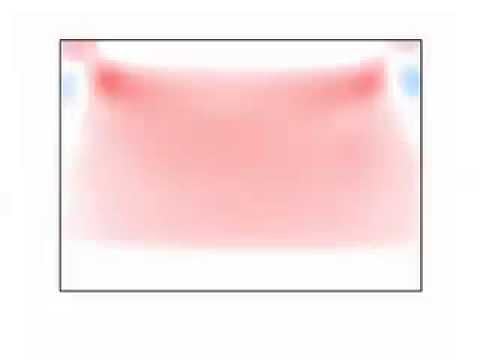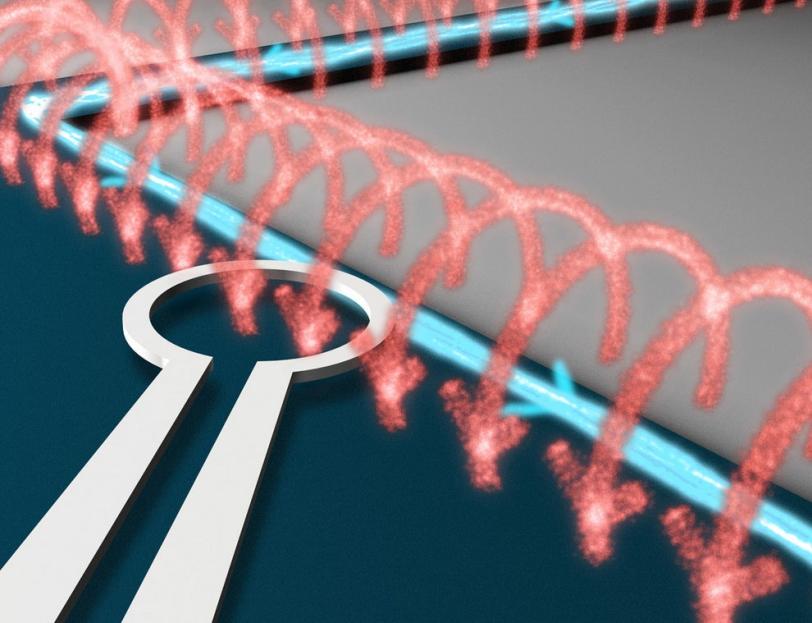SLAC/Stanford Scientists Make First Direct Images of Topological Insulator's Edge Currents
Researchers at a SLAC/Stanford institute have made the first direct images of electrical currents flowing along the edges of a topological insulator – a recently discovered state of matter with potential applications in information technology.
By Mike Ross
Researchers at a SLAC/Stanford institute have made the first direct images of electrical currents flowing along the edges of a topological insulator – a recently discovered state of matter with potential applications in information technology.
In these strange solid-state materials, currents flow only along the edges of a sample while avoiding the interior. Using an exquisitely sensitive detector they built, scientists from the Stanford Institute for Materials and Energy Sciences (SIMES) were able to sense the weak magnetic fields generated by the edge currents and tell exactly where the currents were flowing.
"Now no one can doubt that they exist," said Kathryn A. "Kam" Moler, the SIMES and Stanford University physics professor who led the research, which was published Sunday in Nature Materials.
The scientists surveyed a tiny rectangular piece of mercury telluride, a semiconductor that becomes a topological insulator when cooled to nearly absolute zero in the presence of an electric field.
Post-doctoral researcher Katja Nowack and graduate student Eric Spanton, first and second authors on the team's research report, scanned the sample surface with a SQUID, or superconducting quantum interference device – a microscope for detecting magnetic fields. The team’s custom-made SQUID was 100 million times more sensitive to magnetic moments than the best commercial version.
Initially the thin sheet of material functioned as a conductor, with an electrical current flowing throughout. But as Nowack gradually increased the strength of the electric field applied to the sheet, the current abruptly left the interior of the sample, because the interior became insulating. However, current still flowed exclusively along the edges of the sample, which shows that the material became a topological insulator rather than a usual insulator. Nowack's animation of the data clearly shows the edge currents forming.
"Although these edge currents are not a surprise, it's important to know that they are absolutely real,” she said.

Edge Current Animation
Topological insulators' edge currents are characteristic of a new state of matter, the quantum spin Hall state, which was first proposed in 2005-6 by theorists Charles Kane of the University of Pennsylvania and Shoucheng Zhang of Stanford and SIMES and colleagues. They predicted that electrons of opposite spin would move in opposite directions along a topological insulator's edges without dissipating heat. These two unusual and desirable properties could ultimately lead to new types of "spintronic" devices that exploit electrons' spins, rather than merely their charges, to store information.
In 2006, Zhang and colleagues predicted that mercury telluride could be a topological insulator. Less than a year later, researchers in Germany showed that it did so at very low temperatures. In 2009, Zhang's team predicted that bismuth telluride could be a topological insulator at room temperature. This proved to be true as well. Later, groups at Stanford/SIMES and Princeton showed that 3-D materials can also be topological insulators – in this case, carrying currents only on their surfaces, which could be controlled by toggling a switch. None of these earlier studies, however, directly imaged the edge currents.
Next up for Moler's team are detailed studies of edge currents in new and proposed topological insulators, with samples of different dimensions over a wider range of temperatures.
